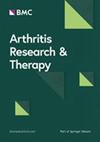Cluster analysis reveals three clinical phenotypes of pulmonary artery hypertension associated with connective tissue diseases: insights into inflammation and immunity
IF 4.6
2区 医学
Q1 Medicine
引用次数: 0
Abstract
Inflammation and immune mechanisms play a crucial role in connective tissue disease-associated pulmonary arterial hypertension (CTD-PAH), though they remain inadequately understood. This study aimed to identify specific clinical phenotypes in CTD-PAH using inflammatory and immune markers through hierarchical cluster analysis. We conducted a single-center, retrospective cohort study of CTD-PAH patients from 2009 to 2024. Clinical variables, including neutrophil lymphocyte ratio (NLR), erythrocyte sedimentation rate (ESR), C-reactive protein (CRP), and complement C3 and C4, were analyzed to form clusters based on baseline characteristics, clinical outcomes, and treatment goals. Among 184 patients (95.1% female; median age 40.42 years), three distinct clusters were identified: Cluster 1 (vasculopathic phenotype) exhibited lower inflammatory activity but worse hemodynamic outcomes; Cluster 2 (vasculitic phenotype) had higher inflammatory activity with favorable hemodynamics; Cluster 3 (mixed phenotype) showed active inflammation and poor hemodynamic status. Most vasculitic patients were classified as systemic lupus erythematosus-associated PAH (SLE-PAH), which had a shorter course and higher prevalence of autoantibodies. The vasculopathic and mixed phenotypes were common in scleroderma-related PAH (SSc-PAH), undifferentiated CTD- related PAH (UCTD-PAH), and mixed CTD- related PAH (MCTD-PAH), associated with poorer treatment outcomes and survival rate. Distinct clinical phenotypes in CTD-PAH correlate with inflammatory activity and hemodynamic status, influencing treatment responses and prognosis. Inflammation and immune mechanisms are essential for the development of CTD-PAH. Three distinct phenotypes in CTD-PAH were identified through cluster analysis. Distinct phenotypes correlate with inflammatory and hemodynamic status, influencing treatment responses and prognosis. Identifying disease phenotypes might improve the management algorithm for CTD-PAH.聚类分析揭示了与结缔组织疾病相关的肺动脉高压的三种临床表型:炎症和免疫的见解
炎症和免疫机制在结缔组织病相关肺动脉高压(CTD-PAH)中起着至关重要的作用,尽管它们仍然没有得到充分的了解。本研究旨在通过分层聚类分析,利用炎症和免疫标记物识别CTD-PAH的特定临床表型。我们对2009年至2024年的CTD-PAH患者进行了一项单中心、回顾性队列研究。临床变量,包括中性粒细胞淋巴细胞比率(NLR)、红细胞沉降率(ESR)、c反应蛋白(CRP)、补体C3和C4,根据基线特征、临床结果和治疗目标分析形成集群。184例患者中,95.1%为女性;中位年龄40.42岁),确定了三个不同的集群:集群1(血管病变表型)表现出较低的炎症活性,但血流动力学结果较差;簇2(血管化表型)炎症活性较高,血流动力学良好;第3组(混合型)表现为活动性炎症和血流动力学状态差。大多数血管病变患者被归类为系统性红斑狼疮相关性PAH (SLE-PAH),病程较短,自身抗体患病率较高。血管病变和混合表型在硬皮病相关PAH (SSc-PAH)、未分化的CTD相关PAH (UCTD-PAH)和混合CTD相关PAH (MCTD-PAH)中很常见,与较差的治疗结果和生存率相关。CTD-PAH的不同临床表型与炎症活性和血流动力学状态相关,影响治疗反应和预后。炎症和免疫机制对CTD-PAH的发展至关重要。通过聚类分析确定了CTD-PAH的三种不同表型。不同的表型与炎症和血流动力学状态相关,影响治疗反应和预后。确定疾病表型可能会改进CTD-PAH的管理算法。
本文章由计算机程序翻译,如有差异,请以英文原文为准。
求助全文
约1分钟内获得全文
求助全文
来源期刊

Arthritis Research & Therapy
RHEUMATOLOGY-
CiteScore
8.60
自引率
2.00%
发文量
261
审稿时长
14 weeks
期刊介绍:
Established in 1999, Arthritis Research and Therapy is an international, open access, peer-reviewed journal, publishing original articles in the area of musculoskeletal research and therapy as well as, reviews, commentaries and reports. A major focus of the journal is on the immunologic processes leading to inflammation, damage and repair as they relate to autoimmune rheumatic and musculoskeletal conditions, and which inform the translation of this knowledge into advances in clinical care. Original basic, translational and clinical research is considered for publication along with results of early and late phase therapeutic trials, especially as they pertain to the underpinning science that informs clinical observations in interventional studies.
 求助内容:
求助内容: 应助结果提醒方式:
应助结果提醒方式:


